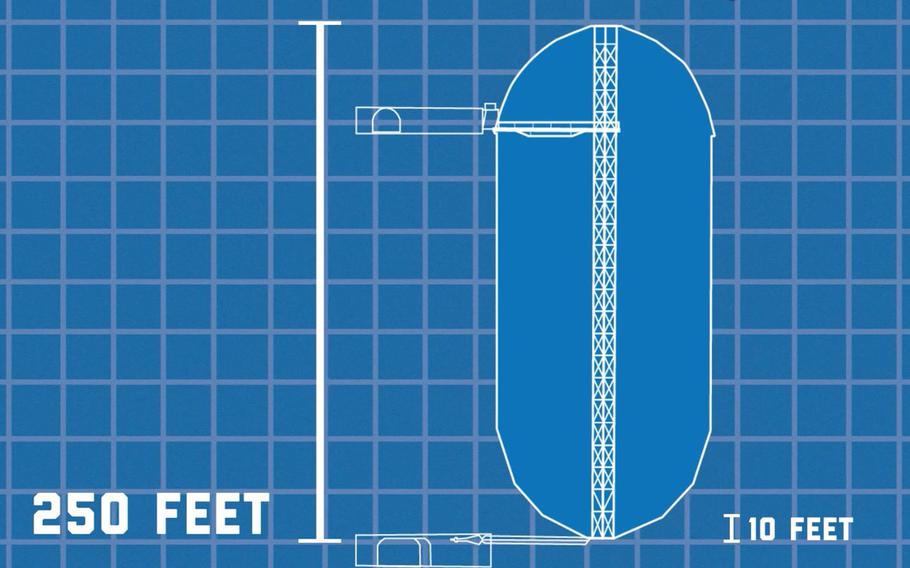
A diagram created by Joint Task Force-Red Hill shows the scale of the 10-foot depth of fuel now left in 10 tanks at the Red Hill Bulk Fuel Storage Facility in Honolulu. (Joint Task Force-Red Hill)
FORT SHAFTER, Hawaii — A brief but important step in permanently defueling the defunct Red Hill fuel facility in Hawaii is slated to begin — and end — next week with the draining of the dregs in 10 massive tanks.
Joint Task Force-Red Hill, the Defense Department entity overseeing emptying of the World War II-era facility, completed removal of 99.5% of 104 million gallons of fuel on Nov. 17.
Just over 103,458,000 gallons were drained in this fall via gravity through pipes leading to a fuel depot on Joint Base Pearl Harbor-Hickam.
The fuel was loaded into tanker ships and transferred to San Diego, Subic Bay in the Philippines, the Port of Singapore and a pair of depots in Hawaii.
On Dec. 5, the remaining 7 feet of so-called “flowable tank bottom” fuel in each tank will be drained through much smaller lines directly on the bottom the tanks, the task force announced in a news release Monday.
The 14 tanks to be drained each hold about 120,000 gallons of flowable tank-bottom fuel, the task force said in an online video. Draining each tank will take about 14 hours and is expected to be completed by Dec. 8.
Defense Secretary Lloyd Austin in March 2022 ordered the facility to be permanently shut in the wake of a fuel spill in late 2021 that contaminated the Navy’s drinking water system for housing on and near the joint base.
Thousands of residents were relocated to hotels on the island for several months as the Navy drained and flushed the system.
One contaminated well shaft, which was isolated soon after residents began complaining of tainted water, remains dormant and awaiting cleanup.
Hundreds of residents have complained of illnesses and conditions they claim have arisen from consuming or washing with water contaminated by fuel.
Some residents have joined a lawsuit filed in federal court seeking compensation for illnesses, stress and financial hardship they blame on the tainted water.
Joint Task Force-Red Hill’s final job will be removing roughly 60,000 gallons of fuel in the lines that must be drained by means other than using the main drain pipes.
That work is expected to be complete by March, at which time a Navy task force will take charge of draining about 4,000 gallons of fuel that can only be accessed by destroying and disassembling piping.
The Navy will also remove about 28,000 gallons of sludge at the bottom of the tanks.